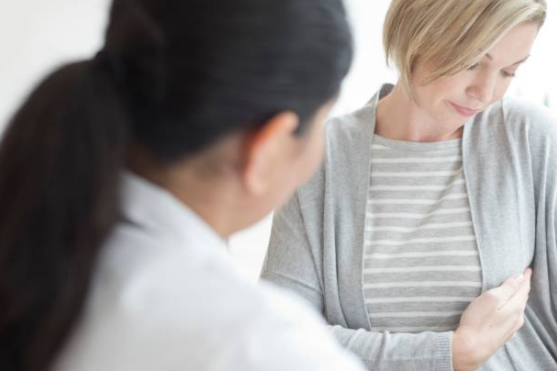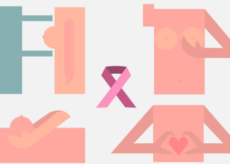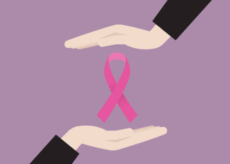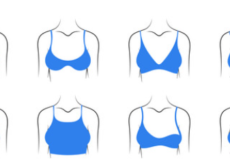6 Health Problems Revealed by Breast – Size, Shape, Lumps, Discharge, Pain
- February 6, 2021
- in Breast Care

There is no single type of breast. Each breast is different, and what may be common in one woman may not be common in another. Menstruation, pre and post pregnancy, hormonal changes, contraception or weight fluctuations bring many internal and external changes in the breast. Although these changes are normal but sometimes, changes in the breasts warn us that there is something wrong with the body.
Most women experience changes in their breasts throughout their lives, but there are some that reveal a serious health problem, such as cancer. That’s why it’s important to see your doctor regularly, at least once a month, to find out what’s “normal” and what’s not. Only a doctor can suggest that the change in the appearance of the breast is not normal and that there is an underlying issue.
Here are some symptoms of diseases that are reflected in this part of the women’s body:
1) Increased Size
Although you may be happy with the increase in the breast size, there is a possibility of underlying health problem. It is necessary to emphasize that breasts are, above all, fatty tissue. Therefore, if you go up a bra size, you may also go up a pants size.
Most women experience changes in their breasts throughout their lives. But there are some that reveal a serious health problem, such as cancer. In addition to fat, breasts are also made up of milk ducts. So, without scaring you, this could be a sign of pregnancy. When women get pregnant, their breasts begin to swell, to prepare for breastfeeding.
2) Reduction in Size
Weight gain makes your breasts grow and weight loss is also noticed in your breasts as they shrink in size. However, this is also an indicator of drop in the estrogen levels.
If you’re about to go through menopause, it’s normal for your breasts to ‘lose weight’. This female sex hormone, which is responsible for growing breasts during puberty, drops sharply in a woman going through this stage of life.
If you are not in this situation and not taking medication that limits your estrogen production, the reduction of your breasts could be a sign of polycystic ovary syndrome, a disease in which a woman has an imbalance of the female sex hormones. This can lead to changes in the menstrual cycle, ovarian cysts, and other conditions.
3) Change in Shape
You are born with a breast form, and you will die with it (unless you go through the scalpel). However, this shape can change over the years. The shape and appearance of breasts is largely based on age and history of breastfeeding.
After the baby is breastfed, and as women age, the ligaments that keep the breasts firm are torn out, and the skin loses elasticity. This results in breast falls out.
The best way to avoid this is a good bra. Weight gain makes your breasts grow. However, it can also indicate that your estrogen levels are dropping. However, changes in shape could also be a sign of something much more serious, such as cancer, according to NHS.
4) Bumps and Bruises
If you have suddenly noticed a lump in the breast, then this could be a sign of some serious condition, including cancer.
However, most lumps are caused by other ailments, details the CDC, Center for Disease Control and Prevention. The two most common causes are fibrocystic disease and cysts. This produces changes in the breasts that are non-cancerous and can cause lumps, sensitivity to touch and pain. Cysts are small fluid-filled sacs that can form in the breast.
5) Nipple Discharge or Changes
Nipple discharge can have different textures and colors. Nipple discharge is usually not a sign of cancer, and can occur due to birth control pills, medications, and infections. Nipple discharge here means fluid that comes out of the breast that is not milk and may be accompanied by blood.
6) Aches and pains
Hormonal changes during the menstrual cycle can make them more sensitive. An ill-fitting bra can also cause pain, as can strenuous exercise without a proper top.
However, breast discomfort can also result in menopause or a cyst. Non-cyclic pain is most common in women in their 30s and 40s, and can only occur in one breast. It is a sharp, burning pain that occurs in a specific area. Occasionally, it is caused by a fibroadenoma, a non-cancerous tumor, a cyst, or a fluid-filled sac.
Author: Nilam

This article has been written by Nilam Mehta and she is one of the owner of this site/blog.
Nilam has worked in Pharmaceutical industry and have studied – Lifestyle Medicine from Doane University; Science of Exercise from University of Colorado Boulder. She believes that many of health problems can be cured naturally.
You can reach her on [email protected]
Medical Disclaimer:
The contents on everydaycares.com, such as text, graphics, images, and other materials care for informational purposes only. The content is not intended to be a substitute for professional medical advice, diagnosis, or treatment. Always seek the advice of your physician or other qualified health provider with any questions you may have regarding a medical condition. Never disregard professional medical advice or delay in seeking it because of something you have read on this website!



